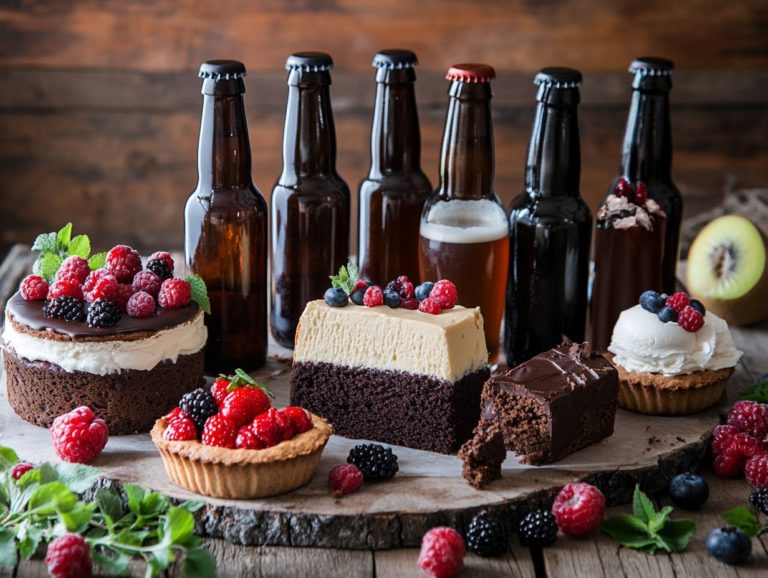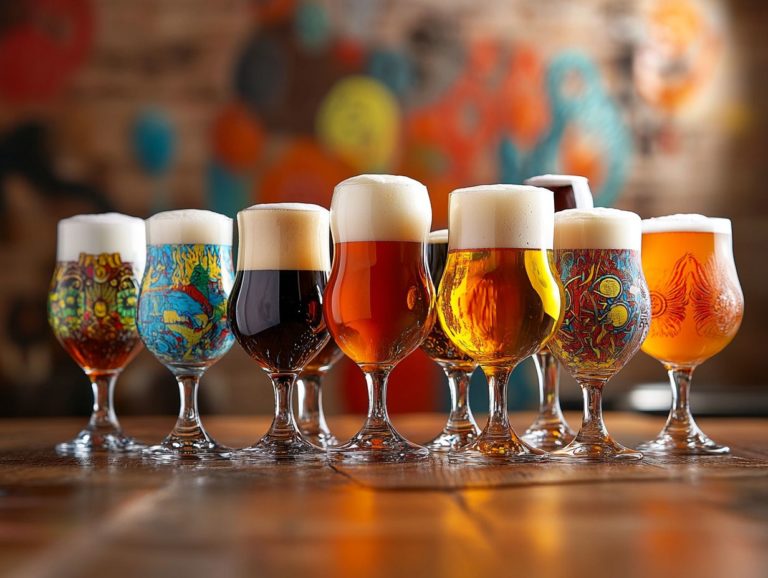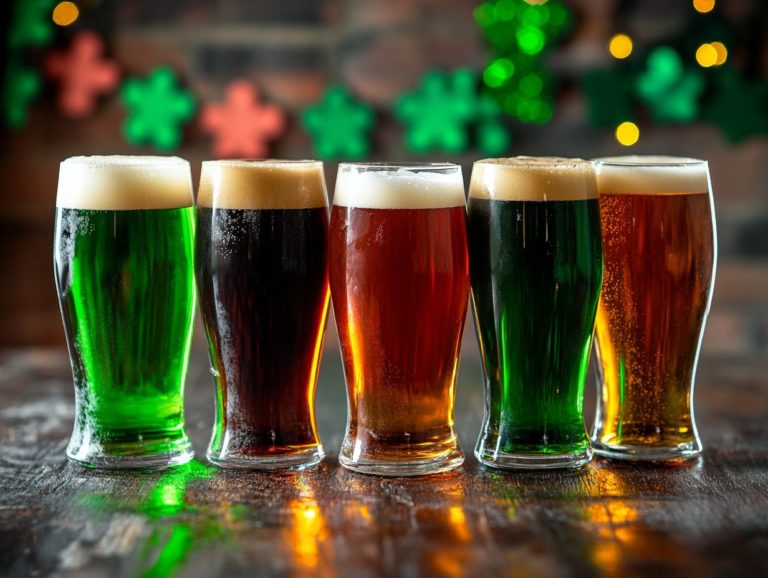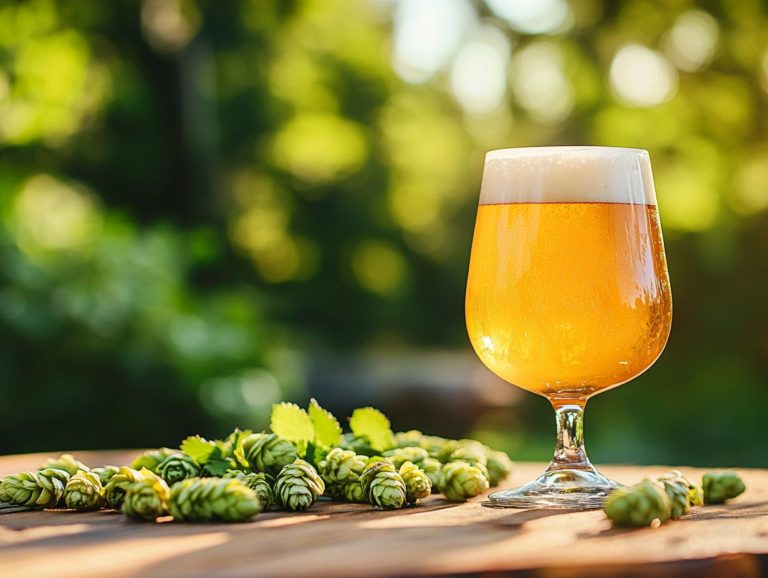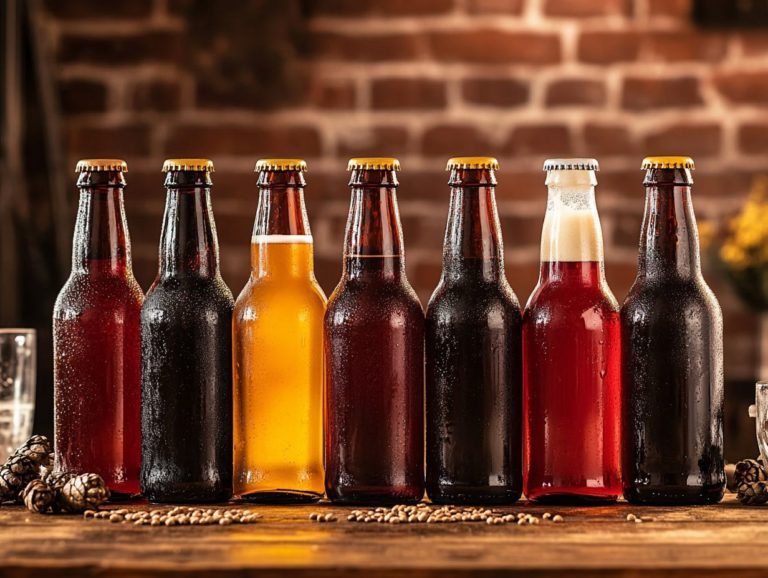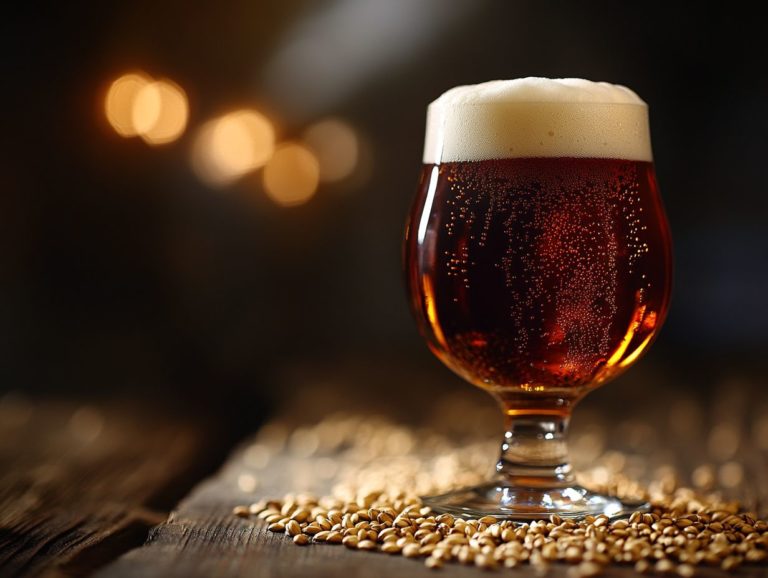Understanding the Hazy Beer Craze
Hazy beer has taken the craft brewing world by storm, captivating both enthusiasts and casual drinkers alike with its unique allure. Get ready to dive into the exciting and flavorful world of hazy beer!
In this article, you’ll delve into the origins of this cloudy concoction. You will uncover its defining characteristics and discover why it has become a beloved choice among modern beer aficionados.
From its distinctive fruity flavors and smooth mouthfeel to its appeal for health-conscious consumers, you ll unravel the secrets behind its surging popularity.
You will learn how hazy beer differs from traditional brews and will address any safety concerns that may arise. Prepare yourself to explore the fascinating world of hazy beer!
Contents
- Key Takeaways:
- What Is Hazy Beer?
- Where Did Hazy Beer Come From?
- What Are the Characteristics of Hazy Beer?
- 2. Juicy and Fruity Flavors
- 3. Low Bitterness
- 4. Smooth and Creamy Mouthfeel
- Why Is Hazy Beer Becoming So Popular?
- 1. Unique and Trendy Flavor Profile
- 2. Appeal to Health-Conscious Consumers
- 3. Social Media Influence
- Is Hazy Beer Safe to Drink?
- 1. Potential Risks of Hazy Beer
- 2. Regulations and Safety Standards
- Frequently Asked Questions
- What is the Hazy Beer Craze?
- Why are Hazy Beers so popular?
- How are Hazy Beers different from traditional IPAs and New England IPAs?
- Can anyone brew a Hazy Beer, such as an NEIPA?
- Are all Hazy Beers the same?
- Should Hazy Beers be served cold or at room temperature?
Key Takeaways:
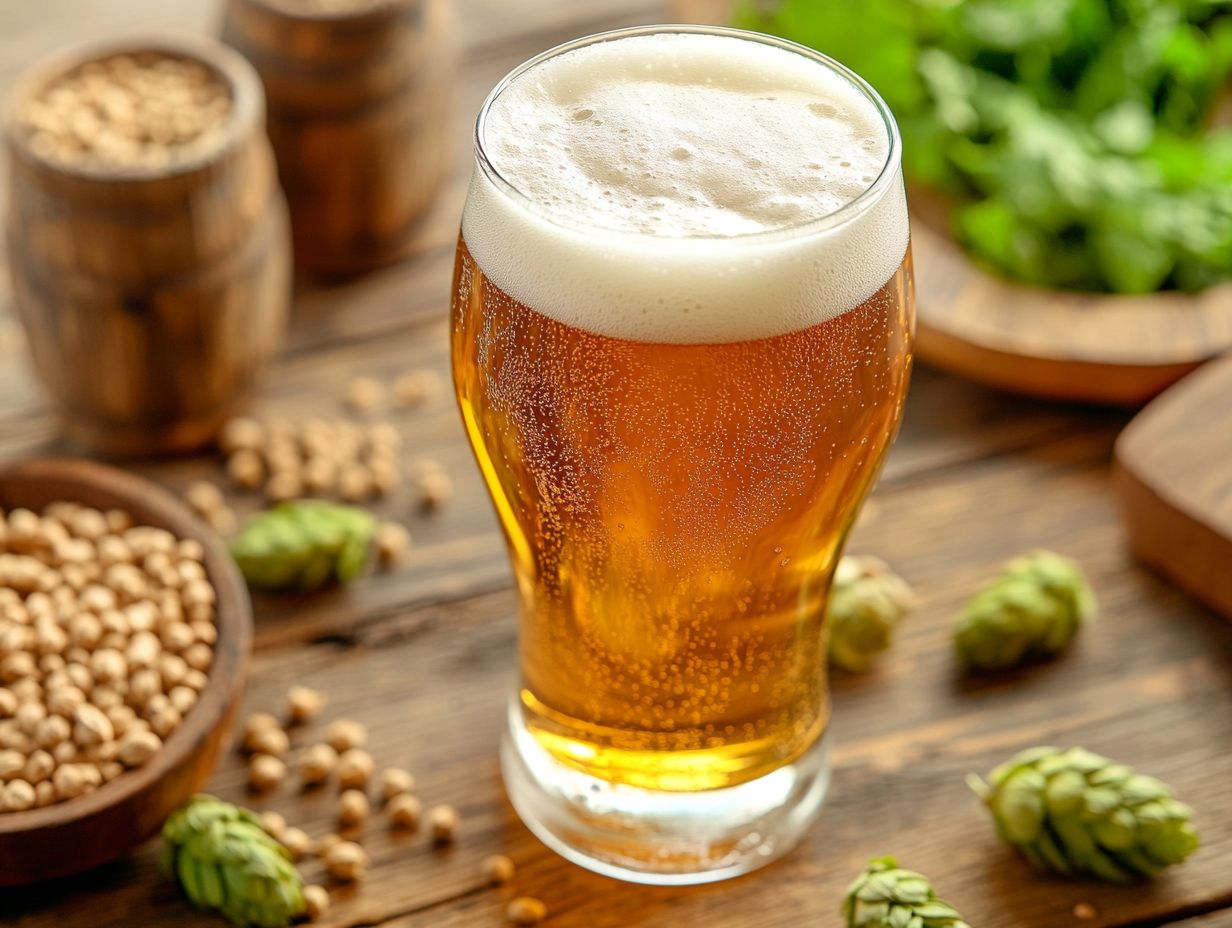
- Hazy beer is a trendy and unique style of beer characterized by its cloudy appearance and juicy, fruity flavors.
- It has gained popularity due to its appeal to health-conscious consumers and the influence of social media.
- Hazy beer is different from traditional beer in its brewing process, ingredients, and flavor profile.
- Breweries like BrewMonster and others have popularized this style.
What Is Hazy Beer?
Hazy beer is particularly known through the Hazy IPA. It has made waves in the craft beer landscape and enchants aficionados with its distinctive traits. This style, primarily associated with the New England IPA category, is characterized by its striking opacity and an explosion of vibrant tropical aromas.
These unique aromas are thanks to some innovative brewing techniques. One key technique is dry hopping, which involves adding hops to the beer after the boil. Another method used is a process where the yeast changes the hops during fermentation to enhance flavors.
By employing specific hop varieties and harnessing the biotransformation process during fermentation, brewers create a cloudy masterpiece that captivates not just the eye but the palate as well. You re not just looking at a beer; you re experiencing a rich tapestry of flavors in every sip.
Where Did Hazy Beer Come From?
Hazy beer, especially the Hazy IPA, has made quite the splash in the brewing world, originating from the innovative landscapes of New England. Breweries like The Alchemist, with their iconic Heady Topper, have been at the forefront of this delightful and cloudy style. Jeremy Marshall and the team at BrewMonster have also contributed significantly to this trend.
The surge in hazy beer’s popularity stems from distinct brewing techniques and a deliberate focus on specific hop varieties. These elements elevate both flavor and aroma, enchanting beer judges and enthusiasts in equal measure.
What Are the Characteristics of Hazy Beer?
Hazy beer possesses a unique allure that distinguishes it from traditional styles. Its opaque appearance stems from a high protein content paired with specific brewing techniques. This creates a visual intrigue that beckons you closer.
As you take a moment to savor it, the tropical aroma envelops your senses. Often, it is accompanied by juicy, fruity flavors that invite you to indulge.
This style offers a delightful low bitterness experience. It delivers a smooth and creamy sensation on the palate.
The floral hop aroma gracefully emerges, enhancing the overall experience without overwhelming your taste buds. The incorporation of hop varieties like Citra, Mosaic, and Amarillo further elevates the sensory experience.
1. Cloudy Appearance
The cloudy appearance of hazy beer is one of its most distinctive features. This often results from the brewing process that embraces the high protein content found in wheat and oats.
This cloudiness isn t just for show; it significantly enhances both the mouthfeel and flavor profile of the beer. When you incorporate certain ingredients, like specific hops and adjuncts, they introduce additional proteins and polyphenols that bolster haze stability.
Techniques such as dry hopping and utilizing unfiltered yeasts only amplify this characteristic, giving the beer a more opaque look. The brewing method you choose, especially when opting for lower filtration rates, helps retain these compounds.
Ultimately, this influences both the visual allure and the sensory experience of the final product. Techniques pioneered by early brewers like Richard Hodgson at Bow Brewery have evolved to modern methods employed by craft breweries today.
2. Juicy and Fruity Flavors
Juicy and fruity flavors are the defining traits of hazy beer, often stemming from specific hop varieties and the technique of dry hopping, which amplifies the beer’s tropical aroma.
These vibrant flavors weave together a tapestry that reveals notes of citrus, stone fruit, and tantalizing hints of tropical sweetness. Hops like Citra, Galaxy, and Mosaic are celebrated for delivering punchy grapefruit and luscious peach flavors, enhancing the overall juicy profile.
When you pour this style of beer, you’re greeted by a dense haze that beautifully complements its fruit-forward essence, making each sip a refreshing delight. Experience the thrilling dance of malt sweetness and hop bitterness, inviting you to explore a range of captivating aromatics and tastes.
3. Low Bitterness
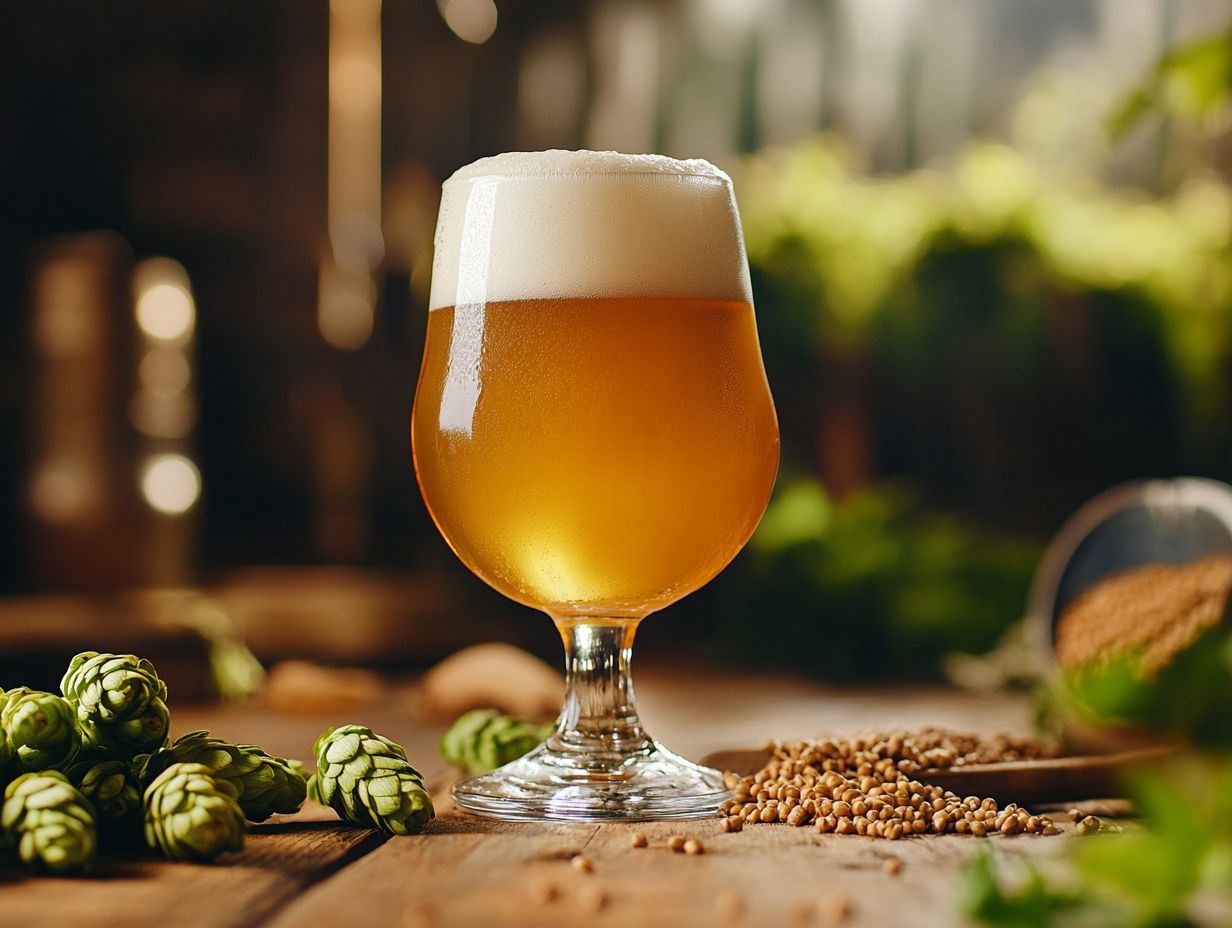
One of the most enticing features of hazy beer is its remarkably low bitterness, which stands in stark contrast to traditional IPAs, allowing the fruity and juicy flavors to truly shine.
This delightful quality elevates your sensory experience and resonates with the tastes of modern beer drinkers who seek smoother, more approachable options.
By employing techniques such as dry hopping and incorporating specialty grains like oats and wheat, brewers can create a velvety mouthfeel while keeping hop bitterness at bay.
These methods result in a sumptuous medley of tropical fruit, citrus, and stone fruit flavors that dance on your palate without being overpowering. This exquisite balance has captivated a new generation of craft beer enthusiasts, who view the hazy aesthetic and its soft character as perfect for both leisurely sipping and adventurous tasting experiences.
The influence of the Great American Beer Festival in promoting such styles cannot be understated.
4. Smooth and Creamy Mouthfeel
The smooth and creamy mouthfeel of hazy beer is a captivating trait that elevates your drinking experience, making it remarkably easy to indulge. The contributions of yeast strains such as Saccharomyces bruxellensis Trois (a type of yeast used in brewing) cannot be understated.
This delightful texture is primarily achieved through the thoughtful selection of grains like oats and wheat, which add proteins and starches that create a rich body in the brew.
The brewing process is equally important; gentle fermentation at slightly warmer temperatures can produce softer flavors that enhance that creamy sensation even further. The use of Saccharomyces bruxellensis Trois yeast strain can also contribute to the smooth mouthfeel.
As you sip on these beers, the velvety mouthfeel envelops your palate, transforming each sip into a comforting experience. This enjoyable texture enhances the beer’s flavor profile and invites you to savor the moment, leading to a deeper appreciation of the artistry that goes into crafting each pint.
Why Is Hazy Beer Becoming So Popular?
Hazy beer has experienced a remarkable surge in popularity, largely thanks to its distinctive flavor profile that entices the discerning palate of craft beer enthusiasts. This style also appeals to health-conscious consumers who favor its lower bitterness and fruity aromas.
Breweries, especially in regions like Yakima and San Francisco, California, have been instrumental in its growth. Social media platforms have also played a crucial role in propelling this trend, providing breweries with a dynamic space to showcase their innovative creations and engage directly with their audience.
In conclusion, the combination of juicy flavors, low bitterness, and a smooth mouthfeel makes hazy beers a favorite among many, inviting both new and seasoned drinkers to explore this exciting style. Whether enjoyed in a casual setting or during a craft beer tasting, hazy beers offer an experience that is truly unique.
1. Unique and Trendy Flavor Profile
The unique and trendy flavor profile of hazy beer is a key reason you find it so appealing as a craft beer enthusiast. This style, often recognized by its cloudy appearance, offers a delightful fruit-forward character that bursts with notes of citrus, tropical fruits, and stone fruits.
These vibrant flavors are beautifully complemented by a low bitterness level, making the experience smoother and more approachable for a broad audience. The creamy mouthfeel and juicy essence of hazy beers resonate with your desire for refreshing options that perfectly balance boldness and subtlety.
As more drinkers like you delve into this genre, they become captivated by its vibrant palette, which confidently embraces the ever-evolving landscape of craft brewing. Innovations in India Pale Ale (IPA) styles continue to drive interest.
2. Appeal to Health-Conscious Consumers
The allure of hazy beers for health-conscious consumers lies in their low bitterness and fruity flavors, offering a more enjoyable alternative to the traditional IPAs that can often be a bit harsh on the palate.
Many hazy options tempt you with lower alcohol content, letting you savor your drink without the heavy effects that often accompany higher ABV selections (Alcohol by Volume). Brewers frequently add ingredients that are perceived as healthier, like oats and wheat, enhancing not only the beer’s texture but also its potential health benefits.
The focus on producing organic IPA variants further aligns with wellness trends. This delightful blend of flavor and perceived nutritional value strengthens its popularity, as you and many others increasingly opt for beverages that align with your wellness aspirations.
The trend of hazy beers continues to grow as more drinkers seek flavorful yet mindful drinking experiences.
3. Social Media Influence
Social media has dramatically shaped the rise of hazy beer, providing breweries with a powerful platform to showcase their distinctive offerings while engaging a passionate community of craft beer aficionados. The dynamic interplay between breweries and consumers on these platforms has accelerated the adoption of new styles like NEIPA (New England IPA) and others.
With visually captivating posts, interactive stories, and compelling videos, breweries can effectively highlight their brewing processes, ingredient sourcing, and tasting notes, weaving a rich narrative around their products. This strategy not only sparks interest but also cultivates a vibrant sense of community among beer lovers.
Take, for example, the Hazy Beer Challenge on Instagram, which encouraged users to share photos of their favorite brews. This campaign led to a remarkable increase in visibility and enthusiasm for hazy varieties.
Breweries also collaborate with influencers, extending their reach and swaying purchasing decisions through genuine endorsements, ultimately boosting sales and enhancing brand loyalty.
How Is Hazy Beer Different from Traditional Beer?
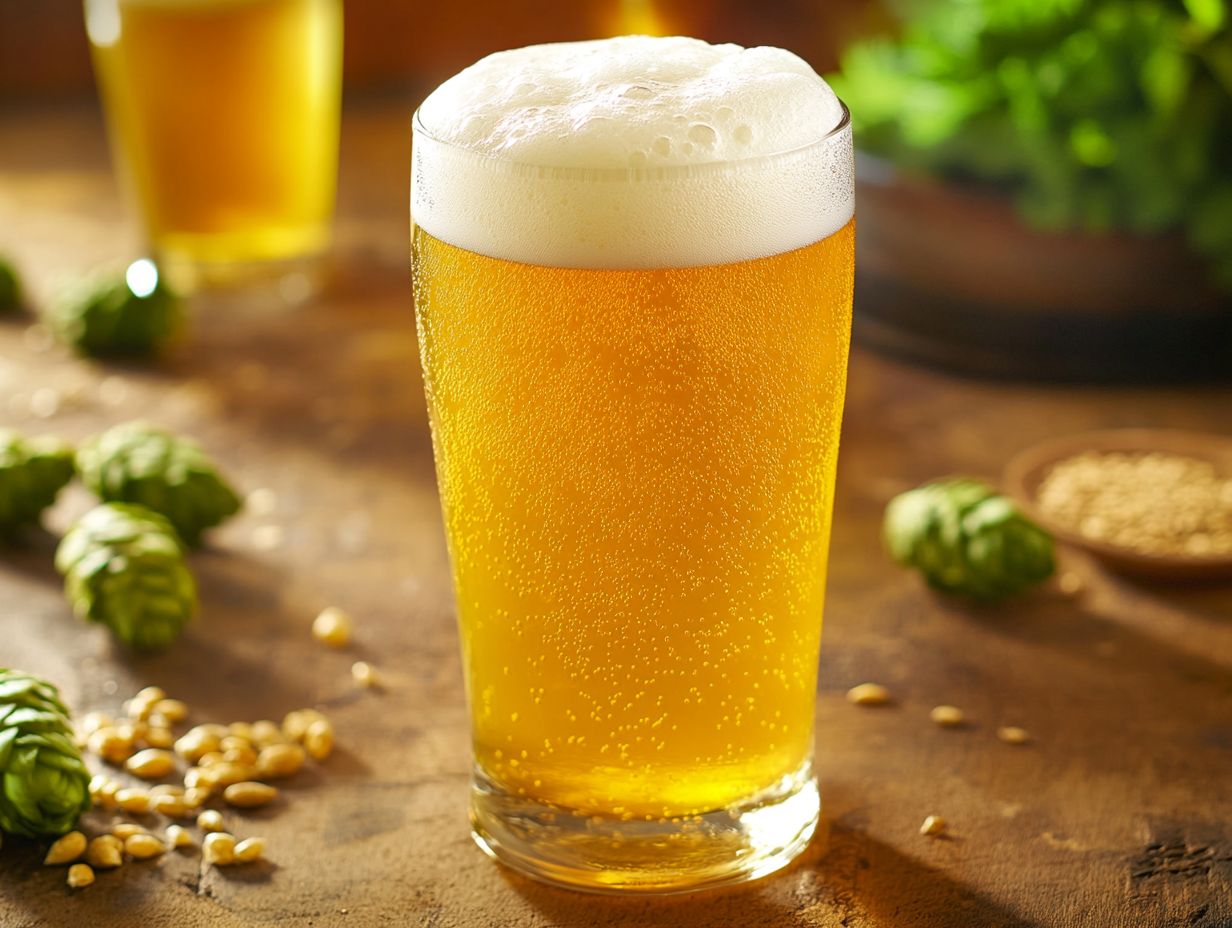
Hazy beer stands apart from traditional beer in several key ways, including the brewing process, ingredients, and the resulting flavor profile. While traditional beers typically present a clear appearance and a bold bitterness, hazy beers are characterized by their cloudiness and a more nuanced, fruity character that has captured the attention of a new generation of beer enthusiasts.
1. Different Brewing Process
The brewing process for hazy beer, often called Hazy IPA or New England IPA (NEIPA), takes a fascinating turn from traditional methods. Techniques like dry hopping and biotransformation during fermentation are important for crafting the rich flavor profile and signature cloudy appearance.
When you dry hop, hops are introduced post-fermentation. This allows for a burst of aromatic oils without the bitterness that typically accompanies hop additions earlier in the brewing cycle.
This technique creates that juicy, fruit-forward flavor that many hazy beer aficionados adore. Notable hops include Citra, Mosaic, Amarillo, and Galaxy.
Biotransformation occurs when yeast interacts with hop compounds during fermentation. This further enhances the complexity and aromas of the beer.
Together, these unique brewing techniques are essential for creating hazy beers that are both rich in character and visually captivating. They are a favorite among craft beer lovers everywhere!
2. Different Ingredients
Hazy beer, including the popular New England IPA, uses a distinctive blend of ingredients that differs from traditional brewing practices. There is a deliberate emphasis on specific hop varieties and higher protein grains like wheat and oats.
These unique elements create a visually striking beer, marked by its cloudy, opaque hue. This is a stark contrast to the clarity of conventional styles.
The choice of hops, particularly those abundant in essential oils, is crucial for imparting vibrant bursts of tropical fruit and citrus aromas. This elevates the sensory experience to new heights.
The brewing process often employs techniques like dry hopping, enhancing hop flavor and aroma while avoiding unwanted bitterness. These ingredients and methods yield a refreshing and dynamic profile that captures the attention of beer enthusiasts seeking an exciting departure from the standard lagers and ales they might typically enjoy.
3. Different Flavor Profile
The flavor profile of hazy beer offers a refreshing departure from traditional brews. It highlights fruity notes and a creamy mouthfeel that contrasts beautifully with the sharper, more bitter undertones often found in standard IPAs.
This intriguing beverage frequently presents vibrant aromas of tropical fruits like mango, pineapple, and citrus. This adds a delightful twist to your tasting experience.
Unlike its clearer counterparts, which may deliver a more pronounced hop bitterness, hazy beer welcomes you into a softer, more approachable world. The combination of various grains and specific yeast strains enhances its juicy quality.
If you re a fan of hazy options, you might discover that they offer exceptional versatility when paired with different foods. Their smooth profile harmonizes beautifully with a wide array of flavors, from grilled meats to spicy dishes!
Is Hazy Beer Safe to Drink?
When pondering the safety of hazy beer, it s essential to consider both the production regulations and the potential risks tied to its distinctive brewing methods. Like any alcoholic beverage, strict adherence to safety standards in breweries is vital for guaranteeing the quality and safety of the final product.
1. Potential Risks of Hazy Beer
While hazy beer is generally safe to enjoy, it s important to be aware of potential risks that can stem from inadequate quality control during the brewing process. These risks can present themselves in various unpleasant ways, including off-flavors, contamination from unwanted microorganisms, and inconsistent product quality.
This not only impacts flavor but could also pose health concerns for consumers. The hazy appearance can make it particularly difficult for both enthusiasts and casual drinkers to detect these issues.
To ensure safety, breweries must adopt rigorous safety protocols and conduct regular testing to confirm that each batch meets established safety standards.
As a consumer, you can enhance your experience by:
- Purchasing hazy beers from reputable breweries known for their strong quality control practices.
- Staying updated on any product recalls.
- Being mindful of storage conditions to prevent spoilage.
2. Regulations and Safety Standards
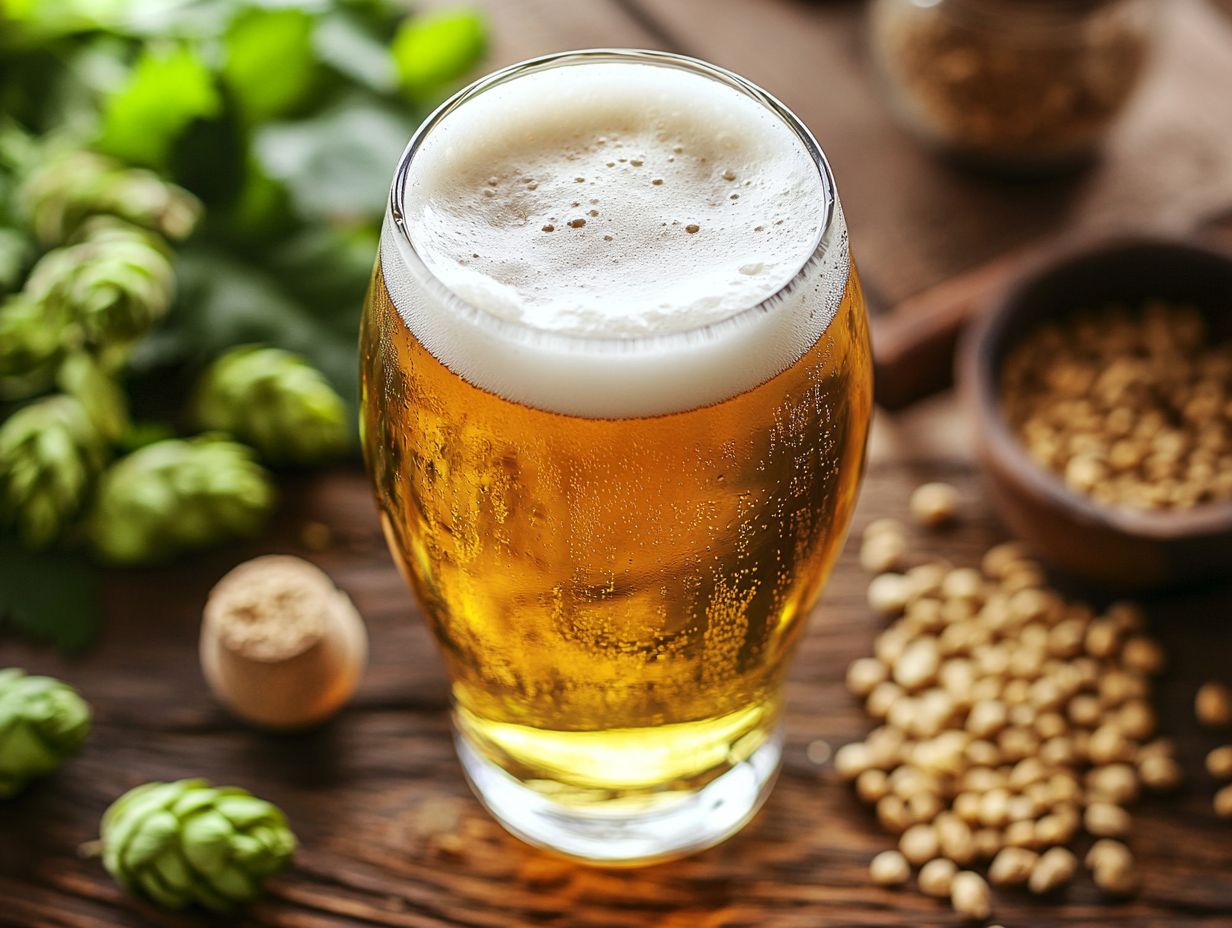
Regulations and safety standards are crucial for ensuring that hazy beer is safe for you to enjoy, with breweries mandated to follow specific guidelines throughout the brewing process. These guidelines cover a broad spectrum of factors, such as the quality of ingredients, sanitation protocols, and proper fermentation practices.
Breweries must routinely test for microbial contamination and adhere to labeling requirements that keep you informed about the product s contents. Following local and federal regulations is crucial, as it not only protects your health but also upholds the integrity of the industry. Regions like Yakima are known for their stringent quality control in the beer brewing process.
When breweries implement strong quality controls, they build trust with consumers like you. This careful approach helps foster a vibrant craft beer culture that prioritizes your safety alongside the distinctive allure of hazy beer. Notable breweries like The Alchemist have set industry standards in producing safe and high-quality hazy IPAs.
Frequently Asked Questions
What is the Hazy Beer Craze?
The Hazy Beer Craze refers to the recent surge in popularity of hazy or New England-style IPAs (India Pale Ales). These beers, such as the iconic Heady Topper by The Alchemist, are known for their cloudy appearance, juicy flavors, and smooth mouthfeel.
Why are Hazy Beers so popular?
Hazy Beers are loved for their refreshing and distinct flavors compared to traditional clear IPAs. The hazy appearance comes from the use of certain hops and brewing techniques, a process often highlighted by brewers like Jeremy Marshall from BrewMonster. This creates a beer bursting with fruity and tropical flavors.
How are Hazy Beers different from traditional IPAs and New England IPAs?
Hazy Beers differ from traditional IPAs in several ways. They are typically less bitter, have a thicker and more creamy mouthfeel, and have a more intense hop aroma and flavor. They also tend to have a lower ABV, which stands for alcohol by volume, and are often unfiltered. New England IPAs, a subcategory of Hazy Beers, particularly emphasize these characteristics.
Can anyone brew a Hazy Beer, such as an NEIPA?
Technically, yes. However, brewing a good Hazy Beer requires a certain level of expertise and knowledge of the specific hops and brewing techniques that contribute to its signature hazy appearance and flavor. It may take some trial and error to achieve the perfect hazy beer, similar to the pioneering efforts of Richard Hodgson at Bow Brewery in San Francisco, California.
Are all Hazy Beers the same?
No, just like with any beer style, there can be variations in the flavor, appearance, and aroma of Hazy Beers. Some may be more citrusy, while others may have a stronger tropical fruit character. It all depends on the specific hops and brewing methods used. For instance, varieties like organic IPA can offer a distinct twist on the traditional haze.
Should Hazy Beers be served cold or at room temperature?
Hazy Beers are best enjoyed cold, just like most other types of beer. The colder temperature helps to enhance the fruity flavors and aroma, making for a more refreshing and enjoyable drinking experience. This is a common practice at events like the Great American Beer Festival, where many hazy varieties are showcased.
Dive into the world of hazy beers and discover your favorite flavor today!

